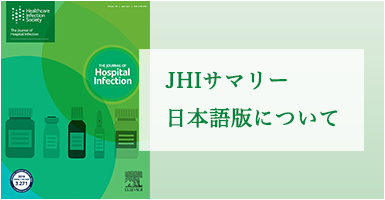インフルエンザ A(H3N2)は院内伝播のリスク上昇と関連する:6 回のインフルエンザシーズンにわたる観察研究★★
Influenza A subtype H3N2 is associated with an increased risk of hospital dissemination ‒ an observational study over six influenza seasons E. Rothman*, O. Olsson, C.B. Christiansen, M. Rööst, M. Inghammar, U. Karlsson *Skåne University Hospital, Sweden Journal of Hospital Infection (2023) 139, 134-140
背景
院内獲得インフルエンザウイルス感染症に関するこれまでの研究では、インフルエンザウイルスの異なる亜型が及ぼす影響による違いの可能性について系統的な評価が行われていない。院内獲得インフルエンザウイルス感染症は従来、高死亡率と関連付けられてきたが、現在の病院環境における臨床的結果はこれまでよりも軽度となっている可能性がある。
目的
各シーズンについて院内獲得インフルエンザウイルス感染症を同定・定量すること、異なるインフルエンザウイルス亜型との潜在的な関連を検討すること、ならびに院内獲得インフルエンザウイルス感染症に関連する死亡率を明らかにすること。
方法
2013 年から 2019 年にスウェーデンのスコーネ郡で入院したインフルエンザ PCR 陽性の全成人患者(18 歳以上)を、本研究に前向きに組み入れた。インフルエンザ陽性サンプルの亜型を解析した。院内獲得インフルエンザウイルス感染症が疑われる患者の医療記録を調べて、院内感染であることを確認し、30 日死亡率を算出した。
結果
インフルエンザ PCR 陽性であった入院患者 4,110 例中、430 例(10.5%)が院内獲得インフルエンザウイルス感染症であった。インフルエンザ A(H3N2)感染症(15.1%)は、インフルエンザ A(H1N1)pdm09(6.3%)およびインフルエンザ B(6.8%)と比べて院内獲得インフルエンザウイルス感染症の割合が最も高かった(P < 0.001)。H3N2 に起因する院内獲得インフルエンザウイルス感染症の大部分はクラスター(73.3%)であり、患者 4 例以上からなる病院アウトブレイク 20 件すべての原因であった。対照的に、インフルエンザ A(H1N1)pdm09(60%)およびインフルエンザ B(63.2%)が原因の院内獲得インフルエンザウイルス感染症の大部分は孤立症例であった(P < 0.001)。院内獲得インフルエンザウイルス感染症に関連する死亡率は 9.3%であり、亜型の間で同様であった。
結論
インフルエンザ A(H3N2)に起因する院内獲得インフルエンザウイルス感染症は、院内伝播のリスク上昇と関連した。本研究は、将来の季節性インフルエンザ感染制御対応にとって重要であり、インフルエンザウイルスの亜型解析は、必要な感染制御策を明らかにする助けとなる可能性がある。院内獲得インフルエンザウイルス感染症による死亡率は、現在の病院環境において依然として高い。
監訳者コメント:
インフルエンザの院内感染が A(H3N2)で起こりやすいこと示した観察研究。現在のインフルエンザワクチンは、A(H1N1)と比較して、A(H3N2 )および B 型インフルエンザウイルスで、防御力が劣る可能性があることが言われている。本研究環境では高齢者が多く、予防接種率が高かったため、ワクチンの有効性の違いが結果に影響したのではないかと考察されている。
同カテゴリの記事
Burdens of infection control on healthcare workers: a scoping review R. Ungar*, R. Gur-Arie, G.S. Heriot, E. Jamrozik *The University of Melbourne, Australia Journal of Hospital Infection (2024) 146, 76-81
Bacterial contamination of water used as thermal transfer fluid in fluid-warming devices M. Schnetzinger*, F. Heger, A. Indra, O. Kimberger *Medical University of Vienna, Austria Journal of Hospital Infection (2023) 141, 49-54
Intrahospital transmission and infection control of Candida auris originating from a severely infected COVID-19 patient transferred abroad E.H. Lee*, M.H. Choi, K.H. Lee, D. Kim, S.H. Jeong, Y.G. Song, S.H. Han *Yonsei University College of Medicine, Republic of Korea Journal of Hospital Infection (2024) 143, 140-149
Understanding routine (non-outbreak) respiratory protective equipment behaviour of hospital workers in different clinical settings - lessons for the future post-COVID-19 R. Barratt*, G.L. Gilbert *Westmead Clinical School, University of Sydney, Australia Journal of Hospital Infection (2023) 136, 118-124
Protracted transmission and persistence of ST80 vancomycin-resistant Enterococcus faecium clonal complex types CT2933, CT2932 and CT1916 in a large Irish hospital: a 39-month whole-genome sequencing study N.L. Kavanagh*, P.M. Kinnevey, S.A. Egan, B.A. McManus, B. O’Connell, G.I. Brennan, D.C. Coleman *University of Dublin, Trinity College Dublin, Ireland Journal of Hospital Infection (2024) 151, 11-20



